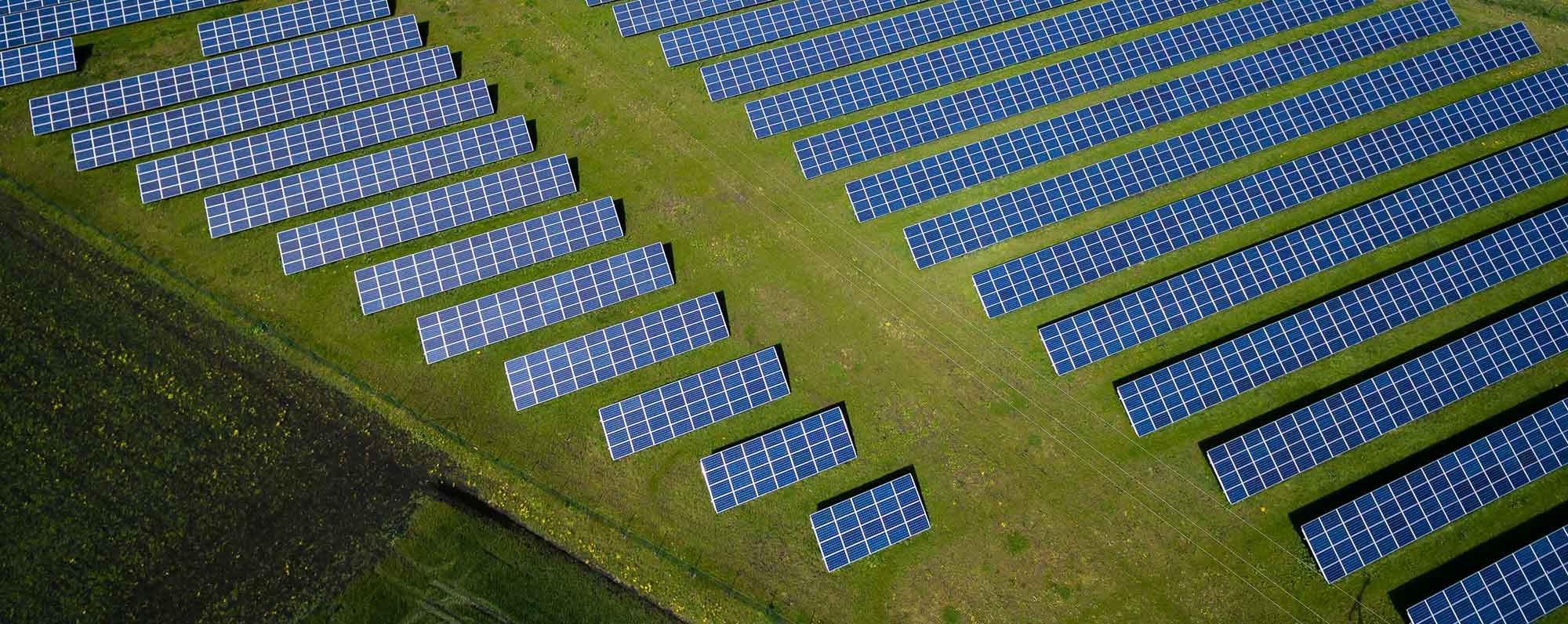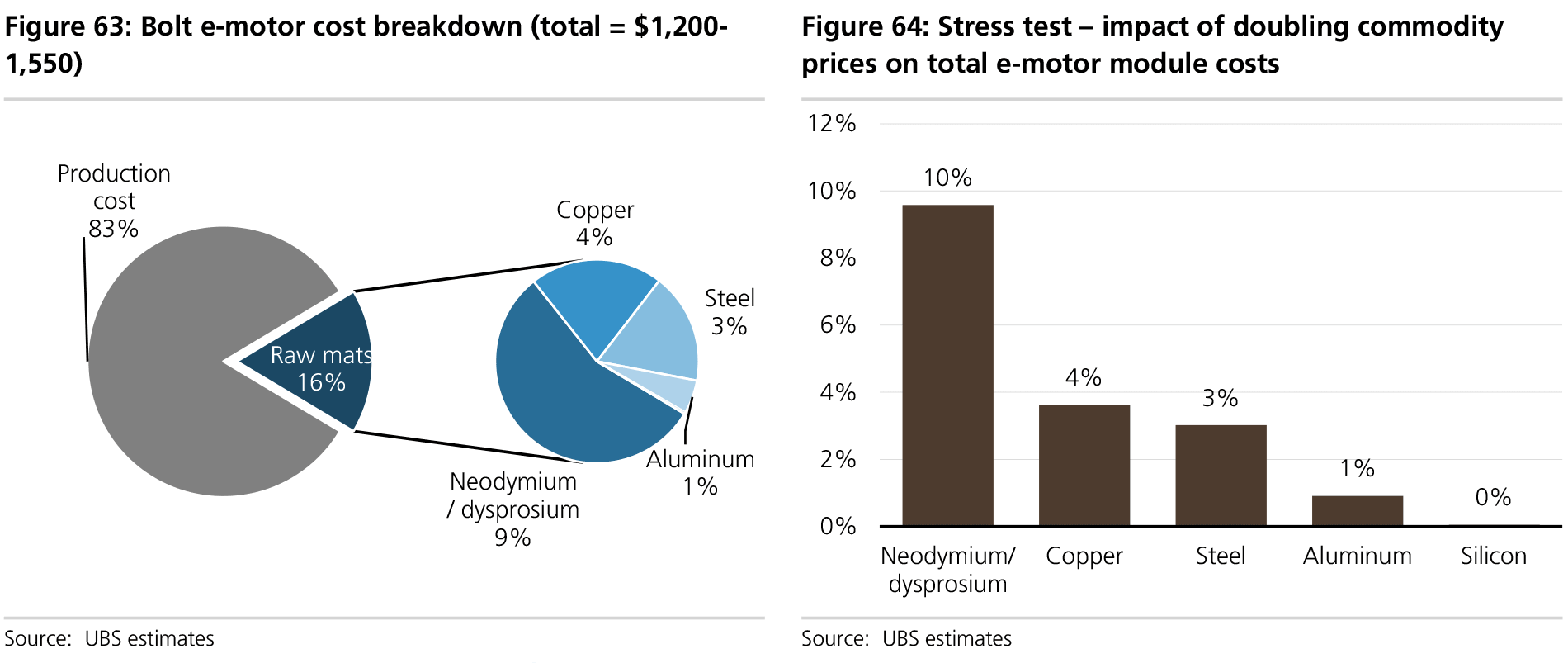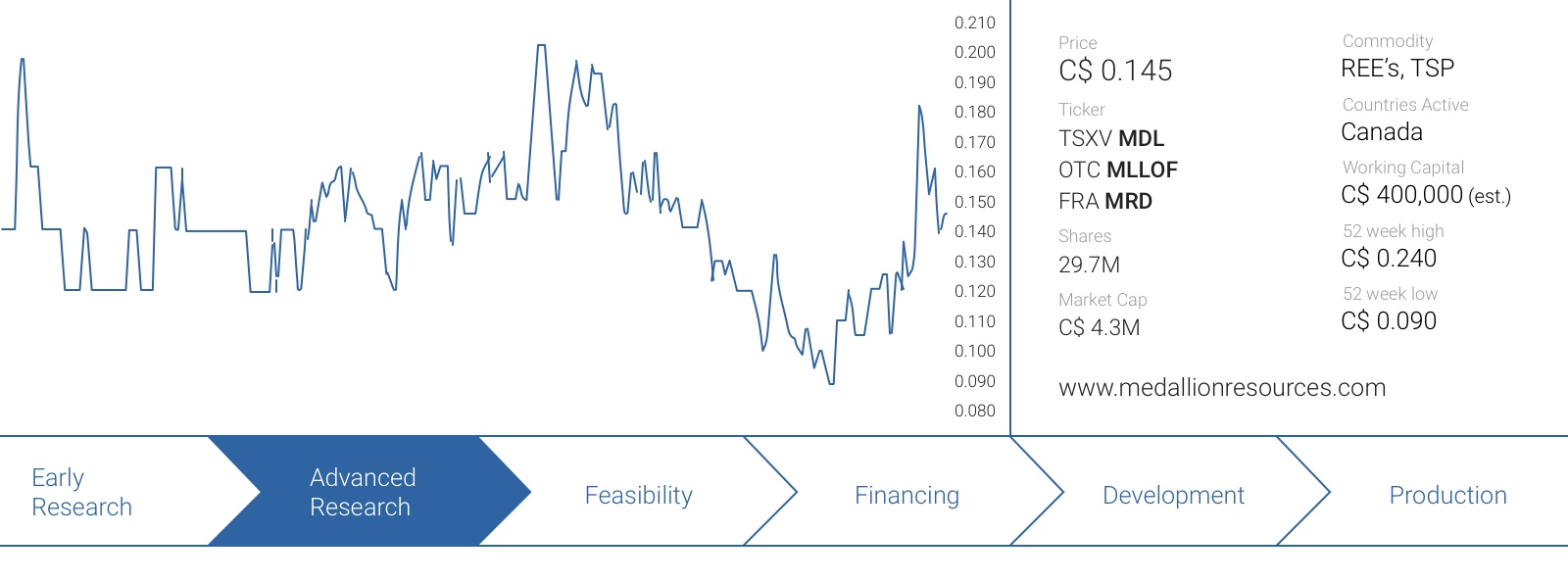Last month, Medallion Resources (MDL.V) announced it successfully completed additional test work aiming at producing a cerium-depleted REE concentrate. This is a major step forward for the company as the low-value cerium was dragging down the total value per kilogram of REE concentrate.
Now the new test results and flow sheet have indicated it is indeed possible to substantially reduce the cerium content from the REE concentrate. This increases the ratio of magnet metals in the final concentrate, and those magnet metals are the real money makers.

Removing the cerium: an important part of creating value
We already thoroughly explained how Medallion was planning to extract the rare earth elements from the monazite sand delivered by the mineral sands producers, and although the technology has been around for several decades and is actually pretty simple, here’s a brief recap of what’s going to happen: The monazite will be dissolved in Sodium Hydroxide at a relatively high temperature (125-150°C) to separate the REE and thorium from the sodium phosphate (which will be recovered through precipitation).
That’s really pretty standard, and the main reason why there are just a few companies processing monazite to recover the REE’s is the fact that Uranium and Thorium need to be dealt with utmost care to avoid any environmental damage. As Medallion seems to be leaning towards building a processing plant in Canada close to the existing facilities where Thorium and Uranium are being handled, we can be sure these elements will be dealt with appropriately.

One of the main question marks was how Medallion was planning to ‘upgrade’ the concentrate. As you might remember the cerium represented approximately 42% of the total REE content of the concentrate. And considering the price is just a few dollars per kilogram, the more cerium in the REE concentrate, the lower the total value of the concentrate.
This is an issue that ideally would have to be dealt with. And that’s what Medallion did. Much to our surprise, pretty much ALL of the cerium was removed from the REE concentrate. We originally assumed a removal factor of 76% which would result in a cerium weight of 14.75% in the REE concentrate, and a NdPr grade of 36.8% (consisting of 8.8% praseodymium and 28% neodymium).
But Medallion’s final concentrate is much, MUCH better than we expected as the remaining cerium grade in the concentrate is just 0.21% (which means in excess of 99% of the cerium was removed from the concentrate (based on a 22.91% head grade and re-weighted average). It also means the average grade of the magnet metals neodymium and praseodymium (NdPr) came in at 41.6%. That’s much higher than the 36.8% we were counting on, and this definitely increases the value (per kilogram) of the final REE concentrate. According to the company’s own calculations, the market value of the REE concentrate increases to almost $30/kg. And that’s more than twice as much than the $12/kg in the summer of 2016 (when the NdPr prices were also substantially lower than today’s spot prices of $70/kg for praseodymium and $55/kg for neodymium).

And there was more good news. Not only was Medallion able to remove pretty much the entire cerium content from the concentrate, it also confirmed it was able to produce Trisodium Phosphate from the incoming batch of monazite. With 25% of the monazite content being phosphate and Medallion’s 97% recovery rate, ~1200-1500 tonnes of TSP per year that could be recovered from the monazite will very likely add a few million dollars per year to the top line. A welcome by-product credit, that’s for sure!
Why magnet metals are so important
As a brief reminder, the huge interest in NdPr are fueled by the demand from magnet producers. NdPr is a key component of magnets used in electric motors and for instance wind mills.

The magnet metals scene hasn’t changed much since in the past few months and quarters. The metal prices remain very strong (which bodes really well for the economics of Medallion’s plant) but no new entrants have entered the supply side of the equation. And that’s not just the case for neodymium and praseodymium (the two key elements for Medallion Resources), but for other REE’s as well. Swiss investment bank UBS has released a research report wherein the bank was able to tear down a Chevy Bolt to check up on the components. Its conclusion? The Chevy Bolt motor needed approximately 1 kilograms of REE’s, with a particular emphasis on neodymium and dysprosium.
Further according to UBS, upon reaching a sales volume of 14 million electric cars per year (which appears to be the bank’s base case scenario for the middle of next decade), the incremental Nd demand would represent 54% of the current neodymium production.

The so-called ‘hot deformation magnets’ which could be seen as the next generation of magnets to be used in electric vehicles were able to reduce the total REE content, but neodymium appears to be irreplaceable. And that’s important for Medallion Resources as the recent test work indicated its final concentrate has a neodymium grade of 32.7%.
The most important requirement for the end users of REE’s is to secure a steady and reliable supply or Rare Earth Elements. As there aren’t a lot of decent projects (i.e., potential new production) being developed right now, some traders started to get nervous and started to push the REE prices higher last year before losing steam.
ASX-listed Alkane Resources has commented the ‘environmental crackdown across China has also included the rare earths industry putting illegal mining under the spotlight and imposing strict enforcement of the quota system. Rare earth industry consultants, IMCOA, estimate China’s illegal rare earths production is currently responsible for supplying over 50% of praseodymium / neodymium (Pr/Nd) oxide required for magnets, so any reduction in illegal supply will affect supply and prices’ and we wholeheartedly agree with this statement.

As you can see on the previous chart, the REE sector really started to wake up again in the second half of 2017 before losing momentum but the trend in the first quarter of this year appears to be encouraging again.

The economics suddenly look much better
As mentioned before, the higher REE prices (and more importantly, the neodymium and praseodymium prices) are already increasing the value of the concentrate but the real kicker is the removal of the cerium from that concentrate.
Not only will this tremendously increase the value per kilogram of the remaining REE concentrate (keep in mind the total volume of the REE concentrate will decrease as the cerium will be taken out), it also looks like the cerium removal process might be cheap enough to see the removal cost being covered by the revenue from selling the cerium concentrate.
The relatively straightforward process of extracting the REE’s from monazite and the looming supply crunch caught the attention of Rare Earth Salts, a Nebraska-based company which has developed a new technology to separate individual Rare Earth Elements provided in a blended a REE concentrate. This process could challenge the currently used solvent extraction procedure and could reduce the production cost of the specific metal concentrates.
We met with Rare Earth Salts representatives Cameron Davies (CEO) and Alistair Neill during the most recent PDAC conference in Toronto, and we had the impression the partnership between both companies is going very well. Rare Earth Salts appeared to be keen to see Medallion Resources aggressively advancing its business plan to become a low-cost REE concentrate producer.

Conclusion
Removing the cerium from the REE concentrate on a cost-neutral basis (the revenue from selling the cerium should be sufficient to cover the removal expenses) is a very important milestone for Medallion Resources. The company continues to develop a much needed supply source for neodymium and praseodymium for the magnet makers and we’re looking forward to the company’s next steps.
Disclosure: Medallion Resources is a sponsoring company, we have a long position.
